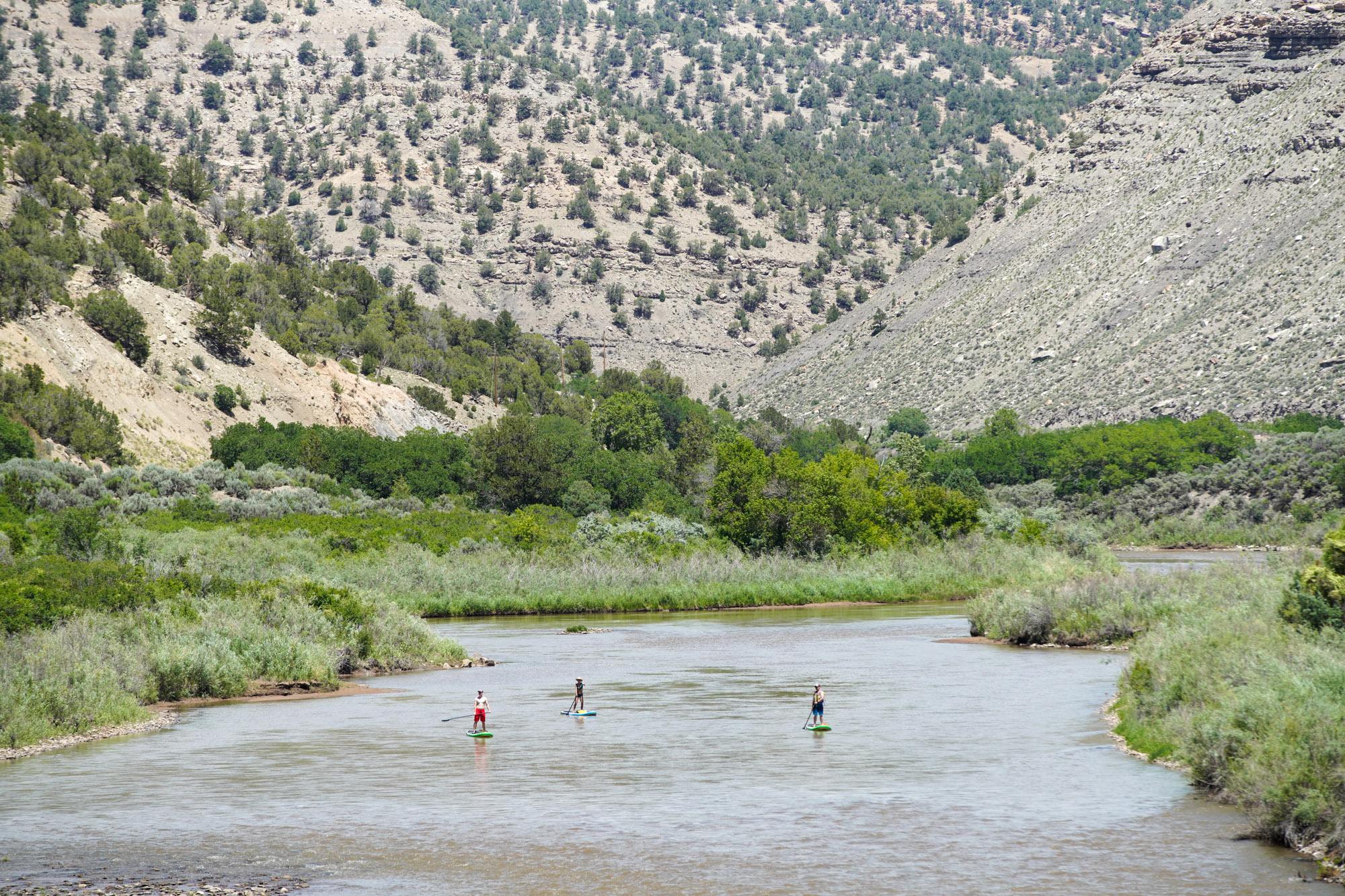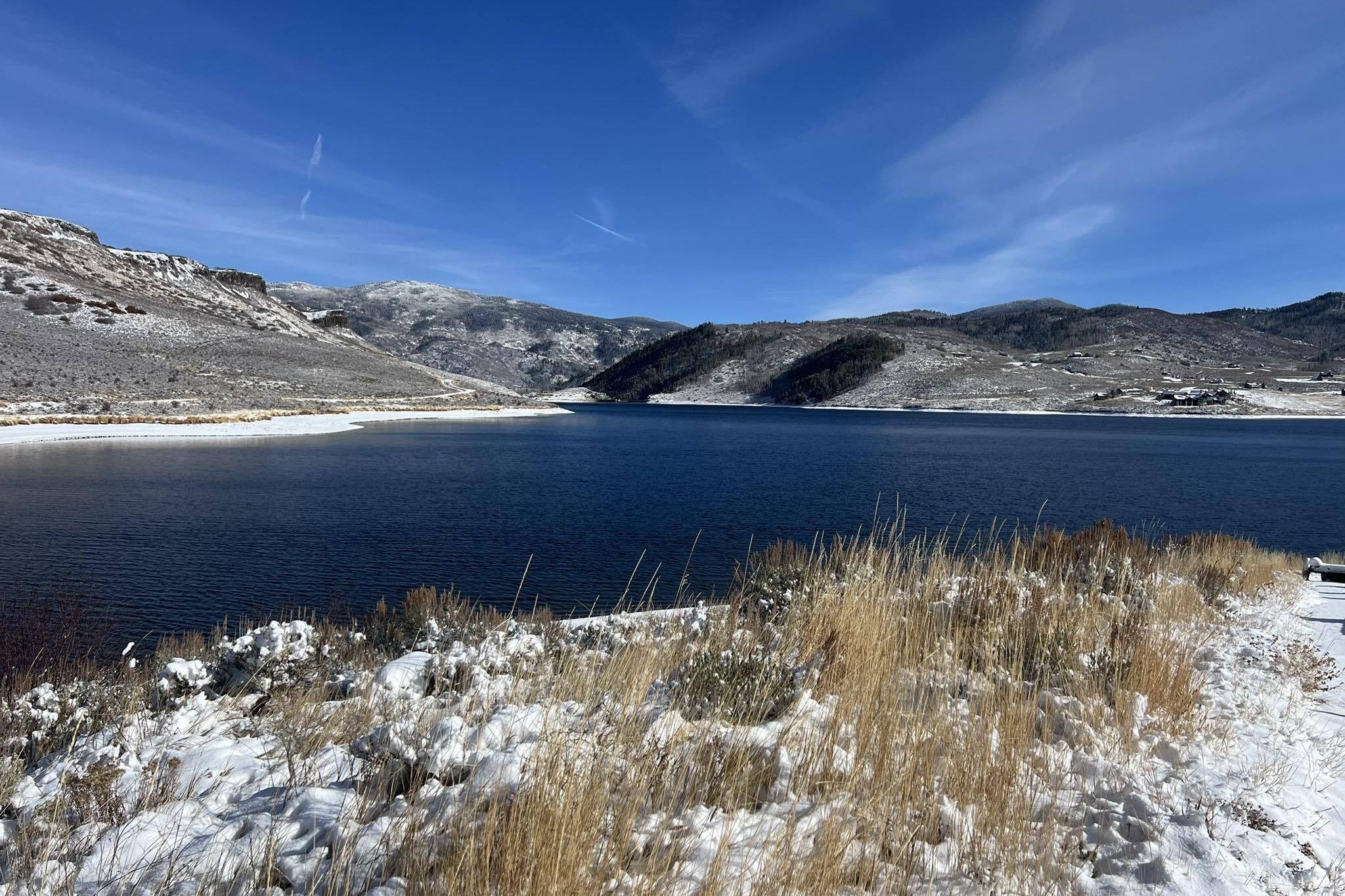
Colorado and the states that make up the upper half of the Colorado River Basin have submitted a two-page proposal on how they will reduce their use of the river.
The five-point plan does not include any mandatory cuts to water usage in the upper basin.
The plan is in response to the U.S. Bureau of Reclamation’s recent demand that the seven states that share the river must act quickly to reduce their water consumption dramatically. The federal agency’s demand that states come up with a plan by August to reduce usage by 2 to 4 million acre-feet of water to save the country’s two largest reservoirs, Lake Powell and Lake Mead, which have both hit record-low levels amid decades of drought and climate change.
In a letter to Reclamation Commissioner Camille Touton, water managers in the upper-basin states — Colorado, New Mexico, Utah and Wyoming — agreed that all the states need to work together to restore balance to the river system, which millions of people across the West rely on for water supplies and hydropower. However, the upper-basin states say their options for helping protect the crucial reservoirs downstream are “limited.”
In the letter, the upper-basin states argue that because the governments in the lower half of the Colorado River Basin — Nevada, Arizona, California and Mexico — use twice as much water, the cuts should be focused downstream.
Becky Mitchell, the director of the Colorado Water Conservation Board, declined to immediately comment on the letter or proposal. In an interview on CPR’s “Colorado Matters” earlier this month, Mitchel said most of the cuts to water use in the Colorado River network should come from downstream states.
John Fleck, a water researcher at the University of New Mexico, said the letter and plan do not describe any new efforts to reduce water use and shows that the upper-basin states have concluded the emergency shortage and federal mandate is largely a lower Colorado River Basin problem.
“They’ve made it clear that they feel like it’s not their responsibility to contribute in any significant way to cutting back their own water use,” Fleck said.
Chuck Cullom, the executive director of the Upper Colorado River Commission, disagreed with Fleck’s assessment. He said the upper-basin states’ plan does show a significant commitment to continuing to take action to conserve river water.
The five-point plan from the upper-basin states makes promises to pursue future programs that are already up for consideration, like paying farmers and ranchers to use less water in a demand-management program. The states have been studying the feasibility of such a program, but work on that in Colorado has recently been put on hold. Collum said the plan now is to try and accelerate the studies on demand management, so the states can decide if and how they’ll adopt the idea.
The upper-basin plan also calls for the reauthorization of the System Conservation Pilot Project, which works in a somewhat similar way. Cullom said the goal is to have that program in operation by 2023. He said programs that would compensate water users to use less, while voluntary, would result in water cuts in the upper-basin states. He said such programs should not be viewed as trivial and would take political capital and resources to make them successful.
The upper-basin plan also mentions the development of a new 2023 Drought Response Operations Plan, which is part of a deal states made in 2019. The proposal also calls for federal funding from the bipartisan infrastructure law to improve water management tools. Water managers for the upper-basin states also pledged to “continue strict water management and administration,” including enacting and expanding water conservation programs.
The upper-basin plan does not detail how much water the proposal will contribute to the 2 to 4 million acre-feet of additional water demanded by the U.S. Bureau of Reclamation. Cullom said hard numbers haven’t been released yet from the lower-basin states either, and he is waiting to see if those water managers in those states will share those figures when their plan is released.
More about the Colorado River
- The most endangered river: A conservation group considers the Colorado River the epicenter of the nation’s water and climate crisis.
- Lake Powell dangerously low: As the reservoir dries up, there’s growing concern about the future of hydropower production.
- What happens if the river keeps drying up: It could trigger a chain-reaction of legal wrangling that could lead to some water users being cut off from the river.
- Tribes fight for inclusion: Leaders of native tribes who depend on the river say a century-old agreement is fueling water inequalities.
- Where’s the water going?: Much of it gets absorbed by soil baked dry by hotter temperatures due to climate change.









